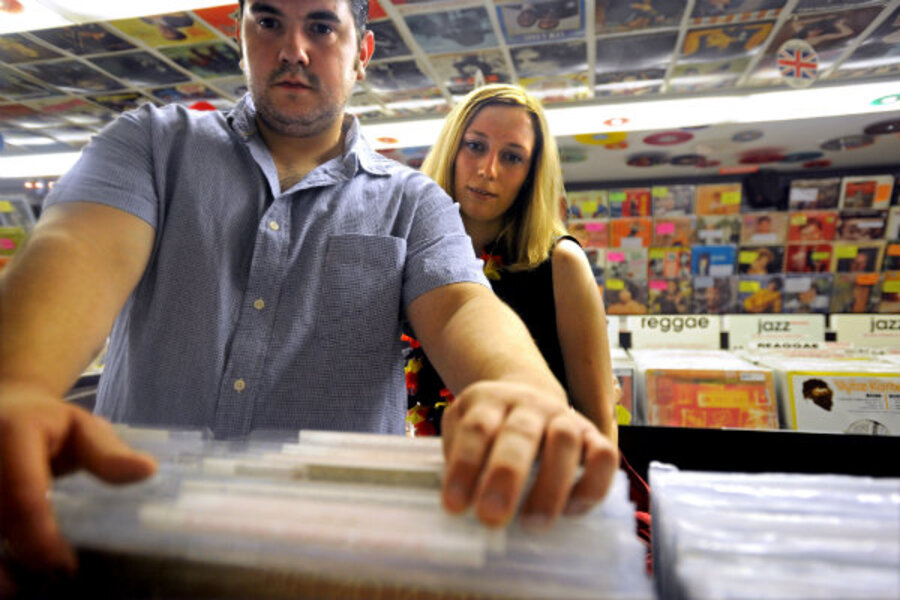The resurgence of vinyl records: why analog lives on
Loading...
| Cleveland
My son Max, a 24-year old indie singer-songwriter, just released his first full-length album. Yes, I said “album.” His record label released it on vinyl, not disc. (It does come with a free download card.)
Vinyl sales were up 16 percent last year (and that’s on top of a 36 percent increase in 2011) while CDs continue their downward slide. At first blush, this sounds either like fiction or a miracle. What’s next, the return of rotary phones?
But it’s true. If you’re in the midst of middle age, and you want to impress a twenty-something, get a turntable, dig out your Led Zeppelin albums, and invite him over to listen to some music.
Yes, it really is a miracle: Analog lives.
And not just in the world of music. I work in advertising, and every hipster is carrying a sketchbook or blank book. They whip them out in meetings, making those of us who never totally gave up paper feel relevant again. They all have digital tablets, of course, but this seems to be their way of saying, “I’m in the moment here. I’m paying attention.” Either that, or the sketchbook is just too cool an accessory to give up.
Organic gardening – the analog version of buying produce at the supermarket – is back, too.
And while e-book sales are rising, print books are showing remarkable staying power, according to a recent Nielson report. And it’s not an either/or proposition. You might buy the e-version of a popular novel and the print version of a book of poetry or non-fiction.
Same with music. Buy the vinyl and get a download card, and you’ll also get something that leaves a mark, a half a pound of vinyl that says, “This music exists.” You’ll get a 12-by-12-in. piece of art. And lyrics you can actually read. You’ll even be able to find out what musicians played on what tracks. And most importantly you’ll hear music the way it was supposed to sound – warm and rich and breathing – not as if you were in a sterile studio, surrounded by a thousand tiny speakers, but as if you were right there in the room with the band.
Like most boomers, I hauled my last turntable to Goodwill back in the ’80s and hooked up my brand new 20-disc CD player. I thought I had entered the future, having no idea the future would take me back to my own basement, where, 25 years later, I would uncover my collection of vinyl albums, stored in the stolen milk crates of my youth, some neglected and silenced for almost 30 years.
A few months ago, I bought a turntable to hear my son’s new album, an experience which ranks right up there with watching him take his first steps. After the album ended, I watched the arm lift and glide back to its cradle. I hadn’t seen that choreography in years. I wanted to see it again. So I hauled the milk crates up from the basement.
The first album I pulled out was Cat Stevens’s “Teaser and the Firecat,” an album I had bought back in 1971, when I was 13, and had last played some time in the ’80s. It was strange the way the album fit my memory. I could anticipate every jump and pop. I knew which song was coming as soon as the last song started its fade. This was my album, marked and scratched by me: an audio fingerprint.
Vinyl becomes personal in a way that digital music never does. Despite Apple’s use of the personal pronoun in naming its products, there is nothing personal about digital music. It’s everyone’s music, identical copies with no personality.
I spent the day listening to my old albums. I kept thinking, since I last heard this album (not the digital version of its songs, but this physical artifact) my parents had died, my children had been born, I lost a marriage, found a career – and somehow I was the same person who had listened to this album in a dorm room late at night, memorizing every word, searching for meaning and for clues to who I would become.
Jim Sollisch is creative director at Marcus Thomas Advertising.





